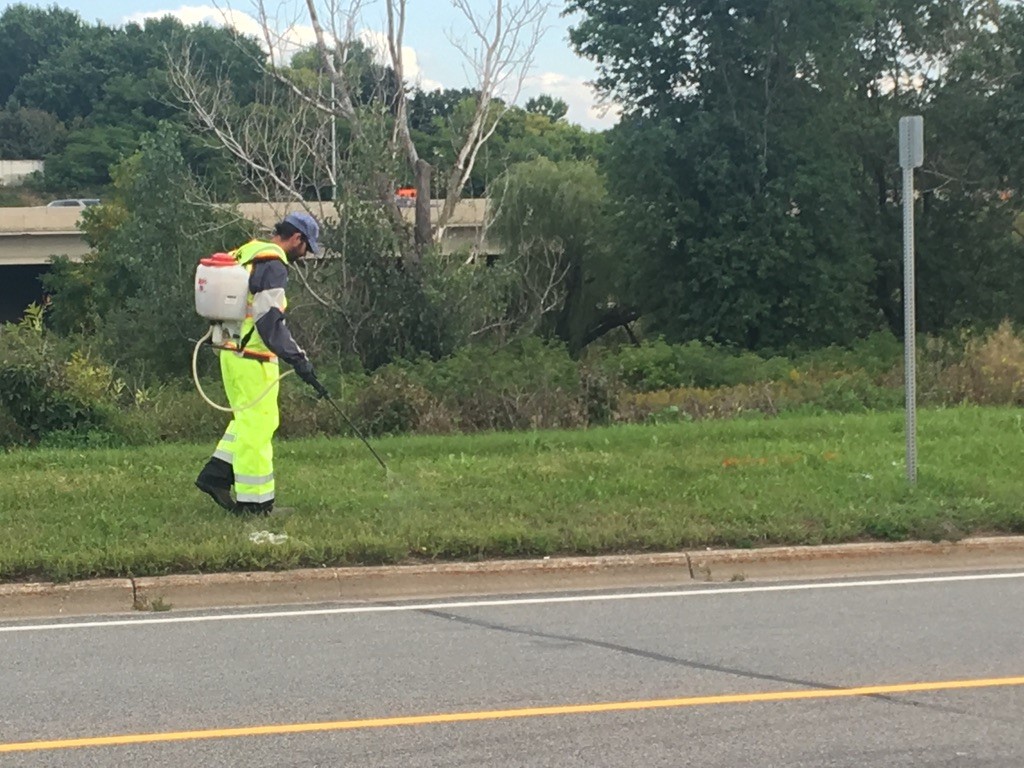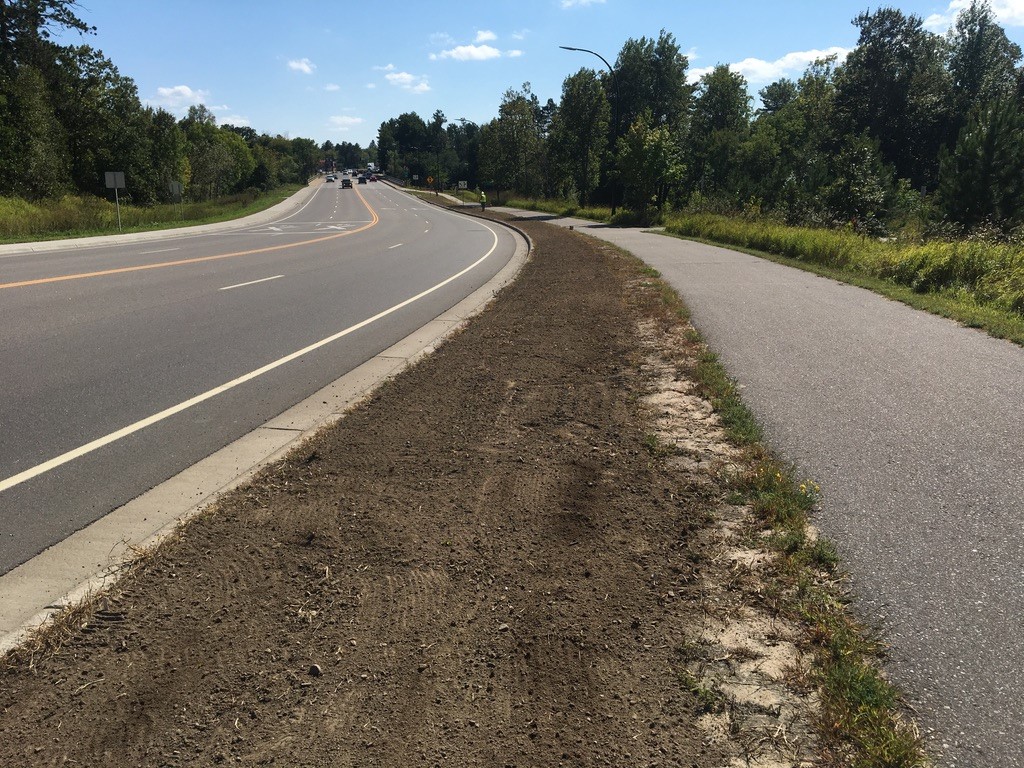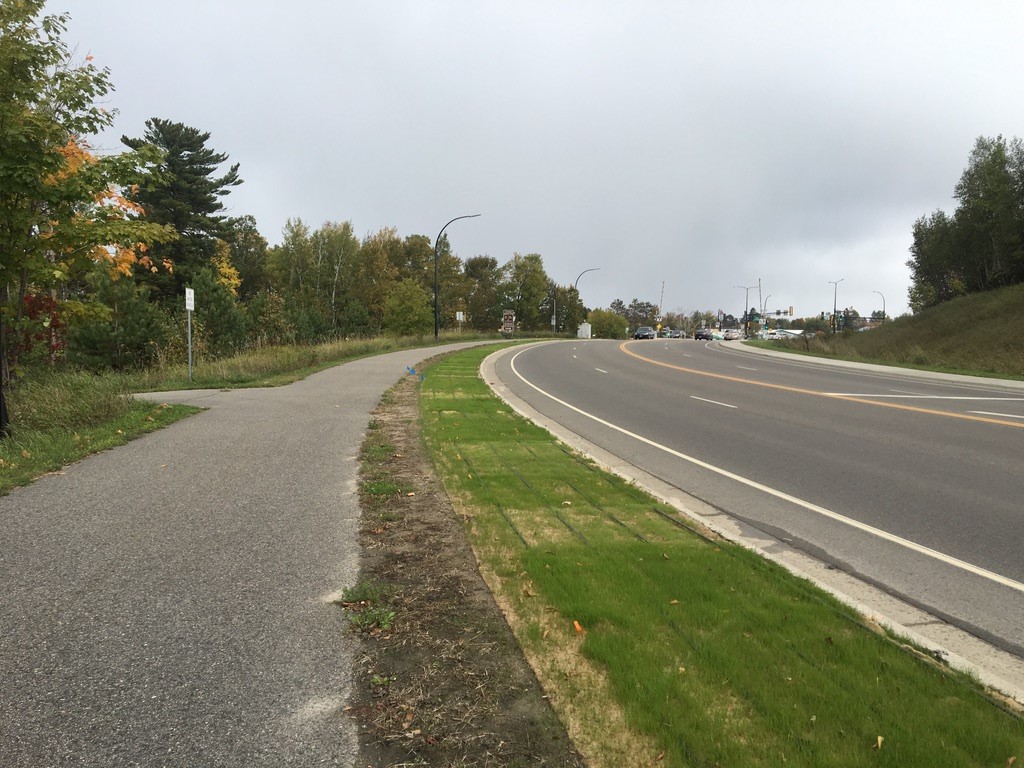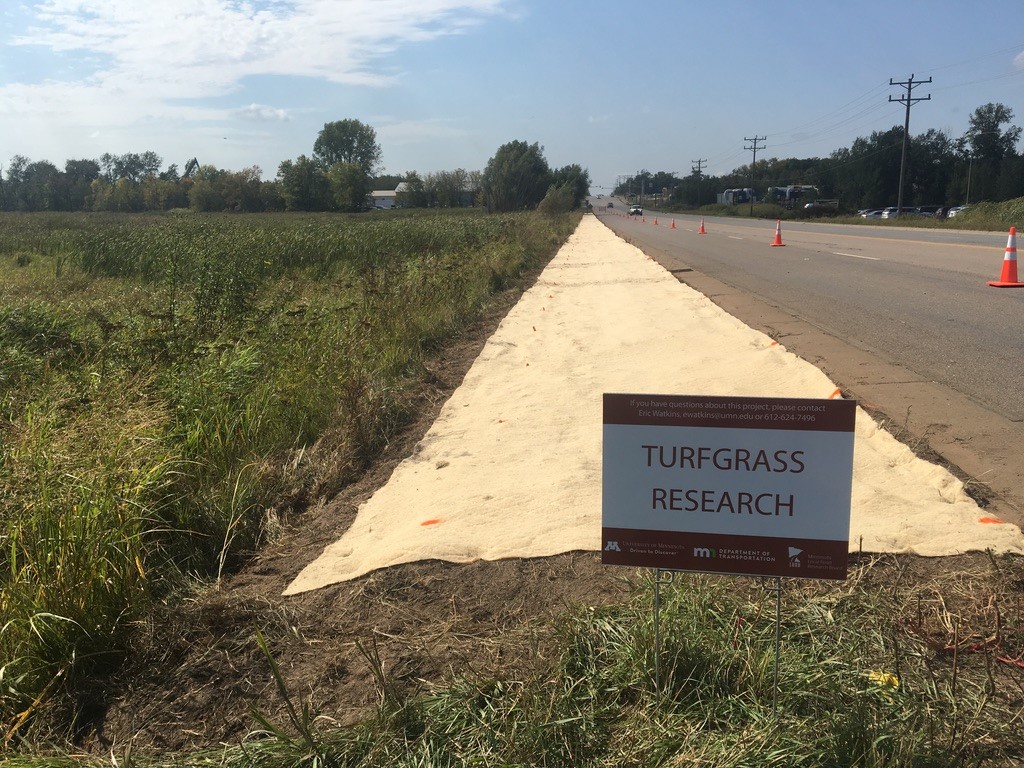By Dominic Christensen
The University of Minnesota Turfgrass Science group is currently conducting research on roadside turfgrasses. We recently initiated a regional mixture trial that is taking place in seven locations across Minnesota (Figure 1).
Our primary objective is to inform the Minnesota Department of Transportation (MnDOT) about the appropriate species and constituent mixture percentages that are suitable in different regions of Minnesota. For instance, the best species mixture along roadsides in northwestern Minnesota (East Grand Forks) may be different than the best mixture for use in the southeastern corner of the state (Chatfield). Our supplementary objectives are to understand the role soil types plays in the success of the plots and ecological dynamics between and among species.
Each of our research sites undergoes a number of preparation steps before seeding. The sites were first sprayed with glyphosate to kill existing vegetation two weeks prior to establishment (Figure 2).
Sites were then tilled (Figure 3) and seeded at a rate of 2 pure live seeds (PLS) per cm-2 (Figure 4). Each square plot is 5 by 5 feet and there are 120 plots per location. Forty entries are included in the trial and replicated three times at each location. The largest portion of entries is made up of various mixtures of cultivars representing six turfgrass species (hard fescue, slender creeping red fescue, alkaligrass, tall fescue, Kentucky bluegrass, and buffalograss) chosen based on previous research focused on tolerance to salt, heat, and ice cover; these entries range from 100% of a single species to a six-species mixture that includes all species. Also included in the trial are current mixtures recommended by MnDOT.
After seeding, each site was covered by a Futerra F4 netless soil germination blanket. Six of the seven sites contained drip irrigation systems from a nearby hydrant and Brainerd was irrigated by a local water truck. The precipitation rates for the drip irrigation ranged from 0.33-0.50” per day among two intervals.
Our previous MnDOT research found that the ideal seeding time for roadsides was from August 20 to September 10 (Figure 5). Our sites were established from August 31 to September 18. This was later than we had hoped and was exacerbated by the cold fall we just experienced, but we still think there was sufficient establishment at most sites.
Preliminary observations indicate that mixtures containing tall fescue had the best establishment whereas the monoculture plots of buffalograss, a warm-season turfgrass, had little or no germination, which was not surprising because it has a recommended planting date in late spring. Nevertheless, the dormant seeding of buffalograss may provide some interesting ecological results in subsequent years.
This spring we will be reevaluating all plots for winter survivability by determining constituent species percentage in each plot. Then, we will be establishing seven more sites the following year (Figure 6). This research will help us answer the best species and possible mixtures throughout Minnesota near roadsides, the influence that soil type plays on plant success, and ecological dynamics between and among species.





